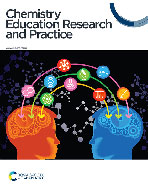Reasoning, granularity, and comparisons in students’ arguments on two organic chemistry items
Abstract
In a world facing complex global challenges, citizens around the world need to be able to engage in scientific reasoning and argumentation supported by evidence. Chemistry educators can support students in developing these skills by providing opportunities to justify how and why phenomena occur, including on assessments. However, little is known about how students’ arguments vary in different content areas and how their arguments might change between tasks. In this work, we investigated the reasoning, granularity, and comparisons demonstrated in students’ arguments in organic chemistry exam questions. The first question asked them to decide and justify which of three bases could drive an acid–base equilibrium to products (Q1, n = 170). The majority of arguments exhibited relational reasoning, relied on phenomenological concepts, and explicitly compared between possible claims. We then compared the arguments from Q1 with arguments from a second question on the same final exam: deciding and justifying which of two reaction mechanisms was more plausible (Q2, n = 159). The arguments in the two questions differed in terms of their reasoning, granularity, and comparisons. We discuss how course expectations related to the two questions may have contributed to these differences, as well as how educators might use these findings to further support students’ argumentation skill development in their courses.


 Please wait while we load your content...
Please wait while we load your content...